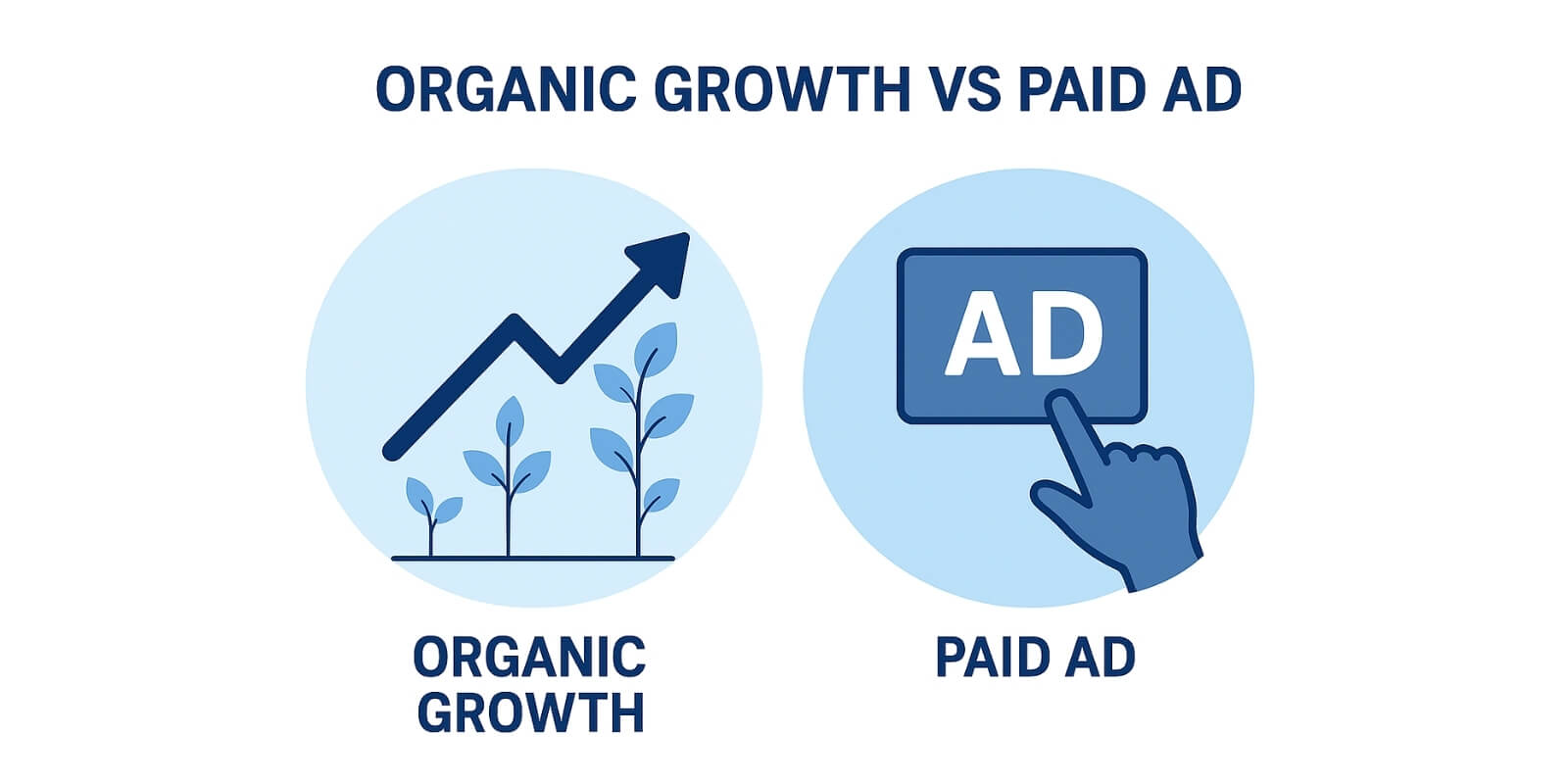| Riyadh, Saudi Arabia — Apr 11, 2025
Paid Ads vs. Organic Growth: Which Works Best?
In the competitive digital landscape, businesses are constantly searching for the most effective way to attract and retain customers. Two of the most common strategies are paid advertising and organic growth. Both approaches have their advantages, and each can play a vital role in building visibility, driving traffic, and generating sales. The real challenge is deciding which strategy delivers the best results for your business. Paid advertising refers to promotional campaigns where companies pay to display their content on platforms such as Google, Facebook, Instagram, or LinkedIn. These ads can appear in search results, social media feeds, or on partner websites, giving businesses immediate visibility. On the other hand, organic growth focuses on attracting visitors naturally through methods like search engine optimization, valuable content creation, and social media engagement. While paid ads deliver instant exposure, organic strategies take time but often lead to long-term and sustainable results. One of the primary benefits of paid advertising is speed. A well-targeted ad campaign can generate immediate traffic and conversions, which is especially important for new businesses looking to establish their presence quickly. Paid ads also allow for precise targeting based on demographics, interests, location, and behavior, making it easier to reach the right audience at the right time. However, the downside is that once you stop paying, the visibility disappears. Paid campaigns can also become expensive if not managed carefully, particularly in competitive industries where cost-per-click rates are high. Organic growth, on the other hand, is built on trust and consistency. By optimizing your website for search engines and producing valuable content, you can attract a steady stream of visitors without paying for each click. Organic strategies also build brand credibility since users tend to trust search results and authentic content more than paid promotions. However, organic growth requires time, effort, and patience. It can take months to see results, and competition for top search rankings can be intense. When comparing the return on investment, both strategies bring different benefits. Paid ads deliver fast results and allow businesses to scale quickly, but the cost can reduce profitability if not monitored. Organic growth has a higher long-term ROI since once your content ranks or your brand builds authority, you can attract traffic without ongoing ad spend. The trade-off is that it requires consistent effort and often more time to achieve meaningful results. A balanced approach often works best. Relying solely on paid ads may drain resources, while depending only on organic strategies can slow down growth. Many successful businesses use paid campaigns to gain immediate visibility while simultaneously investing in organic efforts for sustainable success. For example, a startup might run Google Ads to attract early customers while building a blog and social media presence that will support long-term growth. The choice between paid ads and organic growth also depends on business goals. If you are launching a new product or running a time-sensitive promotion, paid ads provide the speed and visibility you need. If your goal is to build authority, trust, and long-term relationships, organic growth is the stronger option. For many companies, the question is not about choosing one over the other but about finding the right balance that maximizes results. It is also important to measure performance accurately. Paid ads allow for detailed tracking, giving insights into click-through rates, conversions, and customer acquisition costs. Organic strategies are harder to measure but can be tracked through metrics like search rankings, engagement rates, and website traffic. Businesses that understand these metrics can make better decisions on how to allocate resources between both strategies. In conclusion, there is no one-size-fits-all answer to whether paid ads or organic growth works best. Paid ads provide speed, precision, and immediate results, while organic growth builds trust, authority, and sustainability. The most effective strategy often lies in combining both approaches, using paid ads to accelerate short-term results while relying on organic methods to secure long-term growth. By aligning both strategies with business objectives, companies can achieve a balanced and powerful marketing presence.
